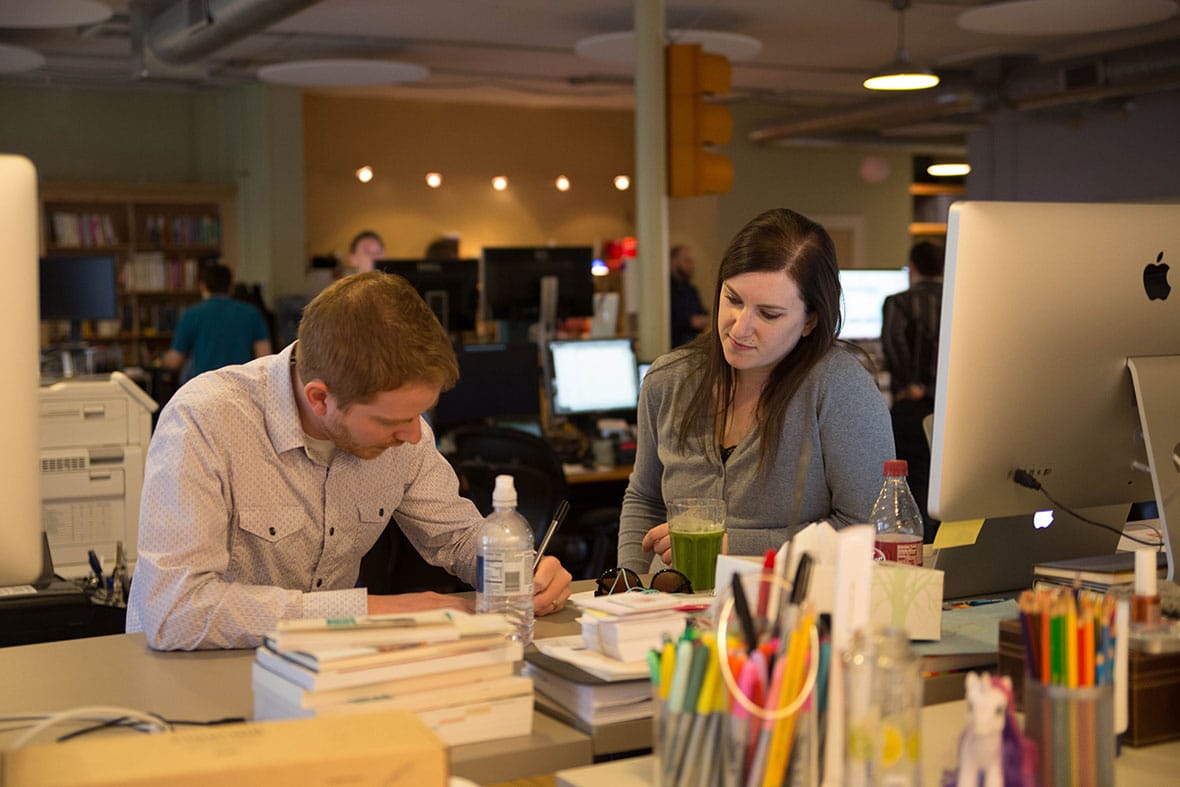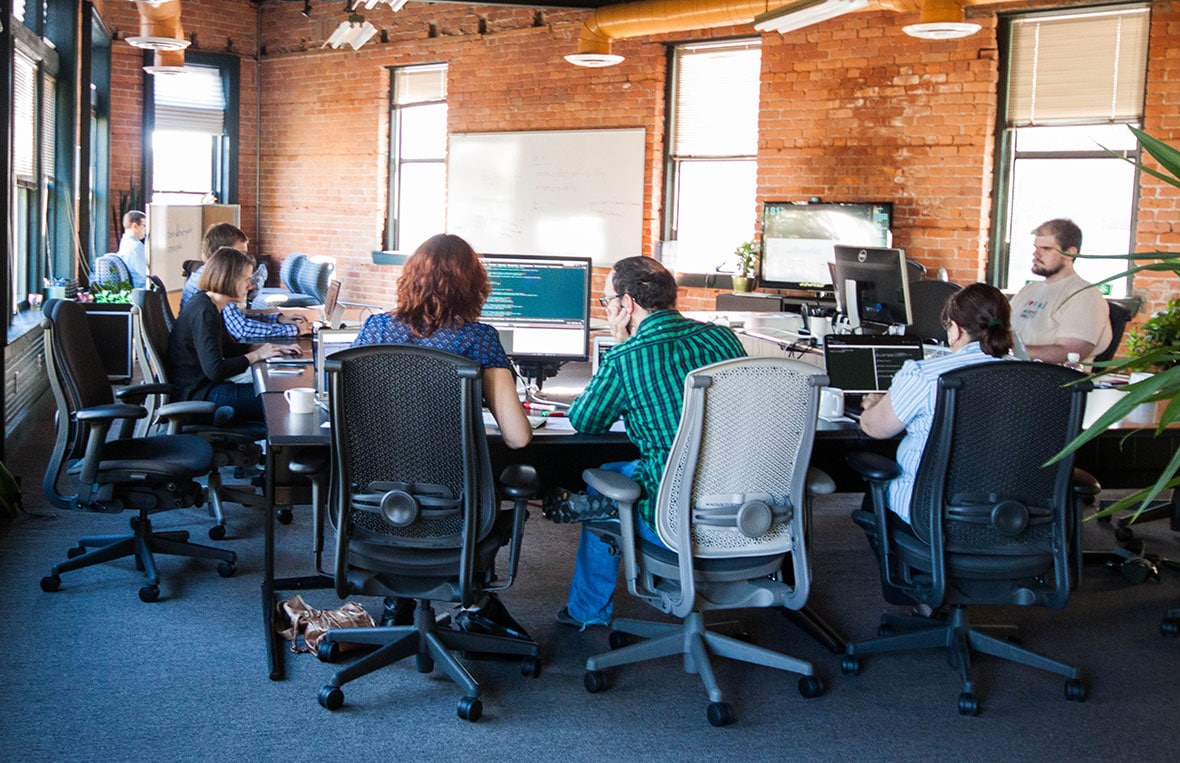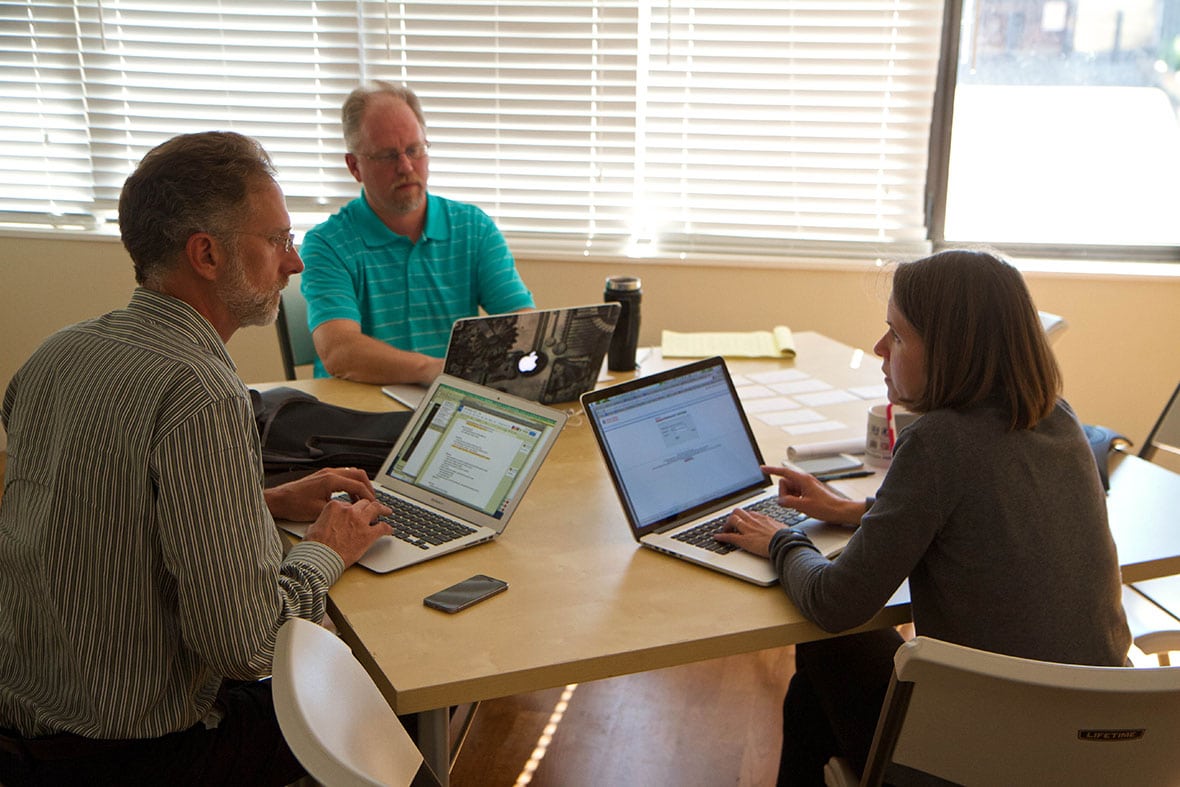Tech companies in the US are notoriously lacking in diversity of all sorts. Gender, racial, and in some places age diversity seem to evade this field, and since the 1980s has actually gotten worse in terms of gender diversity.
Early in my career, my youthful optimism led me to believe that things couldn’t be all that bad out here in the working world, but several jobs later — in both academia and industry, large company and small — I have come to realize that I am always in the minority at work. My alma mater, the University of Michigan College of Engineering, grants 22-24% of its degrees to women, 8-15% to underrepresented minorities. I was the first female faculty member in the Mechanical Engineering department at the University of Notre Dame. When I worked at Ford Motor Company, its engineering workforce mirrored the industry as a whole (~20% women). My peak experience was with my previous company, SRT Solutions, which was 30-35% women. Atomic Object is 20% female.
As a woman in tech, I’m sometimes asked to comment on the issue of diversity in STEM workplaces, which got me wondering recently if gender and age diversity really matter.
As it turns out, it does.
Diversity Connects You with Customers
Women in the US purchase 50% of computers, 50% of cars, and 80% of consumer goods. In other words, women have an awful lot of purchasing power, and they are bringing their own needs and desires to bear when making buying decisions.
The same goes for older vs. younger consumers. Americans age 50 and older are fast approaching 50% of our population and they control nearly 70% of disposable income. To tie this to the tech industry, 41% of Apple computers are purchased by Baby Boomers.
Organizations with more diversity in key roles are better equipped to create products and services that meet market needs.
Designing for women doesn’t mean shrinking products down and applying a pink veneer to them. And designing for older people doesn’t mean making dumbed-down products with large buttons. Women and older Americans aren’t monolithic special interest groups. Women are 50% of the marketplace with the same wide variety of needs and desires as men have, but their preferences may by different. Older folks also have diverse needs and interests.
Companies will be more aware of their markets if their markets are amply represented within their ranks. An example of this from my early days of engineering was the 1999 redesign of the Ford Windstar. Ford created a development team of 30 female engineers to make their minivan user-friendly for their target market: women with children. At the time, only 8.5% of engineers were women, so having 30 female engineers playing an integral role in the development of virtually every aspect of the 1999 Ford Windstar was a noteworthy accomplishment. The redesign was very popular and improved sales of the vehicle.

Diversity Helps with Innovation and Problem-Solving
According to the Anita Borg Institute, balanced teams are more innovative and are better at problem solving. And Scott Page, a University of Michigan economist and author of The Difference writes:
“If people think alike, then no matter how smart they are, they most likely will get stuck at the same locally-optimal solutions. Finding new and better solutions, innovating, requires thinking differently. That’s why diversity powers innovation.”
In Professor’s Model, Diversity = Productivity, New York Times
Diversity Increases the Bottom Line
If diverse teams create products that are better suited for the diverse marketplace, then it only stands to reason that diverse companies are more successful. And in fact, studies show that this is true.
The Anita Borg Institute reports that for Fortune 500 companies with at least 3 women directors, return on sales increases by at least 42%. Certainly it’s not clear if this is because women improve the bottom line or because successful companies tend to be more women-friendly, but nevertheless, there appears to be a connection between a diverse workforce and business performance.

Atomic Object cares about diversity. While we might not be as diverse currently as we’d ultimately like to be, we recognize that getting to a truly diverse workforce means making a conscious effort. It means supporting programs that encourage under-represented groups to pursue tech careers (Girl Develop It Detroit, BitCamp, Hour of Code), getting involved with groups that promote workplace diversity, and seeking out a wide variety of talented employees.

